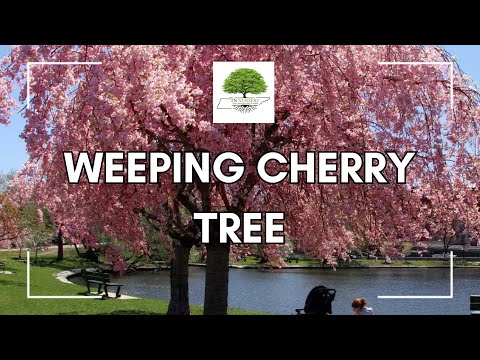Weeping Cherry Tree for Sale
The Weeping Cherry Blossom Tree (Prunus Subhirtella) is one of many Cherry Tree varieties that are popular for their pink, springtime blooms. This tree is a native of Japan and is immediately recognizable because of its pendulous, graceful hanging branches adorned with small blossoms. It is often planted near bodies of water where its weeping form can be reflected, but it would be perfect just about anywhere in your garden.

Weeping Cherry Plant Details
Family: Rosaceae
Light Requirement: Full sun
Water Needs: Moderate
Height: 15-40 ft
Spread: 15-25 ft
Growth Rate: Moderate
Soil Preference: Moist, well-drained
Season of Interest: Spring
Flower Color: Pink, White
Fruit: Small red berries, ripen to black
Wildlife Value: Bees, Butterflies
Notable Characteristics
The Weeping cherry flowers emerge before the foliage does, sprouting small, five-petal flowers that range from white to light pink. They grow in clusters along the thin, tapered branches, which are quite flexible and droop downward as they grow, giving the tree a “weeping” effect.
The bark of the weeping cherry blossom tree is smooth and dark, offering a striking contrast to the light and bright blooms. The foliage emerges as a bronze color in the spring, providing a beautiful, glowing contrast to the pink flowers, before maturing to a dark green. In autumn, the leaves of this tree turn a pleasant yellow before dying off for the winter.
Landscape and Maintenance
Despite its delicate appearance, the Weeping Cherry Tree is quite robust and thrives well in the United States, especially in the southern and midwestern states, or hardiness zones 6-8. It prefers moist, well-drained soil but can tolerate compacted or even dry soil once established. It thrives in full sun.
Unfortunately, it offers little to no winter interest, but its mid-spring burst of flowers more than makes up for it. It is well worth having this dramatic beauty in your garden or yard.

Exposure
The Weeping Cherry Tree thrives in full sun to partial shade. For optimal blooming and health, it prefers at least six hours of direct sunlight daily. In shadier locations, it may have reduced flowering and growth.
Height at Maturity
Under 25 Feet
Usage
Fruit
Shipped As
Ships
UPS
Planting Zones
5-9



